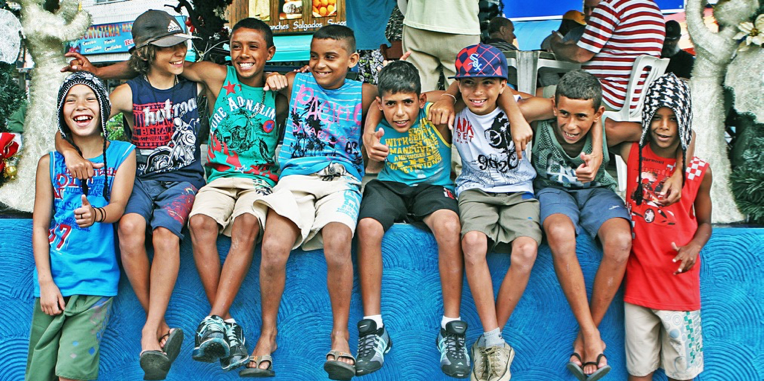In this month’s blog post I want to look at why and how we can use real life topics to engage our teenage students.
As teachers and materials writers, I think we can sometimes fall into the trap of thinking of language as a set of structures and lexical sets that have to be learned. We start to believe that if we manage to stuff a sufficient quantity of these into our students, we will have succeeded in teaching them English. We focus on the syllabus and forget about why we’re actually teaching a language. But, of course, language is so much more than that. The structures and lexical sets are vital, but they are the means to an end and the end is communication. In the 21st century, when we can communicate 24 hours a day, all around the world, it’s vital that our students understand how to make global connections. How can we achieve this? By teaching students about different cultures and peoples, and showing them how we use language in real world contexts.
As our students find out about other people in other places and discover shared interests, fears, hopes and values, they feel genuinely motivated to learn how to communicate better and to find out even more. The challenge for us is to guide our students to find those points of connection.
So using real world topics is important because it’s genuinely educational; because it enables a better understanding of the world and better communication and because it’s motivating.
Let’s pick two very common themes and look at how we can teach our all-important structures and lexical sets through the medium of real-life material.
Clothes
We can teach the language of clothes through posed pictures and carefully drawn illustrations. But isn’t it much more interesting to get our students to look at real people wearing real clothes?
Look at this image, for example.

Of course, we can use this picture to elicit some basic items of clothing vocabulary: t-shirt, shorts, trainers, sandals, cap, hat, socks. Is it a problem that the picture doesn’t show more items of vocabulary? Not necessarily. If we use an instruction like: make a check next to the clothes you can see in the picture, we can also include other clothing vocabulary words, for example: trousers, shirt, sweater, jacket.
Then we can pull a grammatical point from the pictures; perhaps the passive: What material are the clothes made of? or the present continuous: What are the boys doing? Why are they laughing?
And we can further engage our students’ interest by getting them to discuss the picture and relate it back to their own lives. One of the interesting points about this picture is the way that the boys are all wearing different clothes, and yet they share a very definite style. So we can exploit this, making it relevant to students by asking questions like these:
Are these boys dressed the same? Discuss the similarities and differences.
Think about your friends and family. Do you wear similar clothes? Why do you wear the clothes you do?
Let’s think about another very common topic now:
Food
Everyone eats food all around the world, so this is a great opportunity to use real life material to engage your students’ interest and educate them about other people and other cultures.
In Impact Foundation, we show students photographs of children’s breakfasts from four different countries. Take a look at the photos. Do you think you could guess the countries?




Unit 1, page 32/33, Impact Foundation
The photographs and the reading text that accompany them, tell students something about different children’s eating habits and lifestyles and also give them a starting point to compare their own breakfasts with those shown. They learn about real people: Emily in Malawi, who is seven years old and has breakfast at six in the morning with her grandmother and seven other family members. They learn about Viv from the Netherlands, who loves bread with sweet sprinkles. Did you know that people in the Netherlands eat 750,000 slices of bread with chocolate sprinkles for breakfast every day?
By using real information about real people, we can make the topic of food so much more interesting. And we can still teach those all-important lexical sets (food) and structures (countable and uncountable nouns).
Do you incorporate real life material into your classroom? What are the topics that really motivate and inspire your students? Comment below and share your ideas.



I really enjoyed reading this article. It’s indeed so powerful- and I’m so glad I came across this post.
Thank you Sofia! I’m delighted that you found it useful.